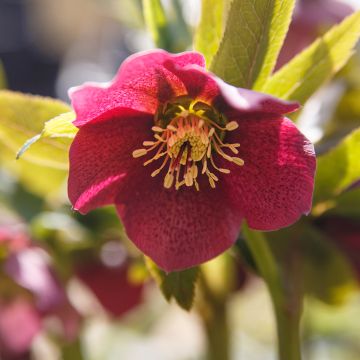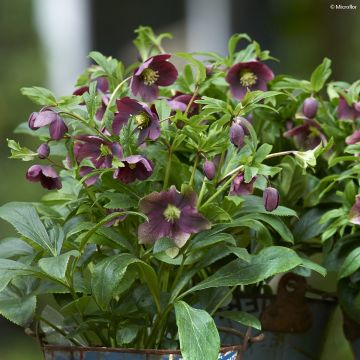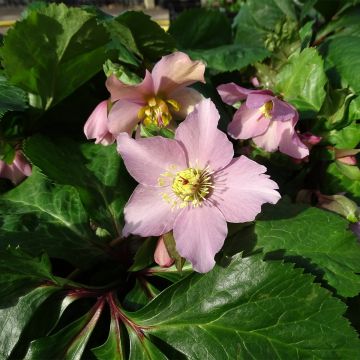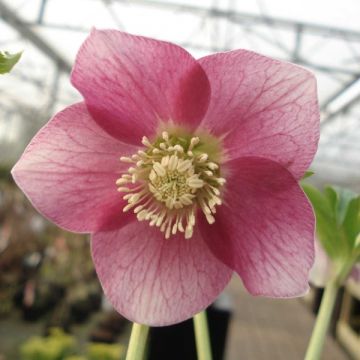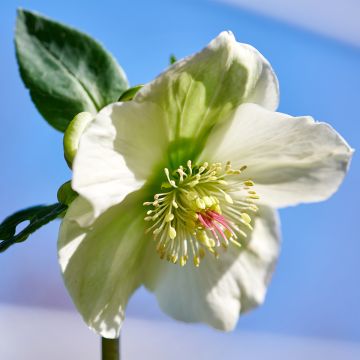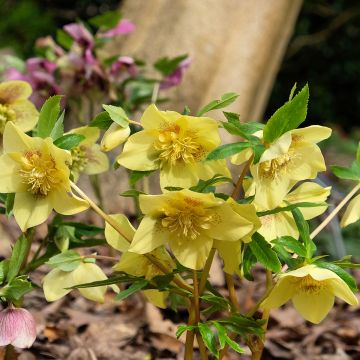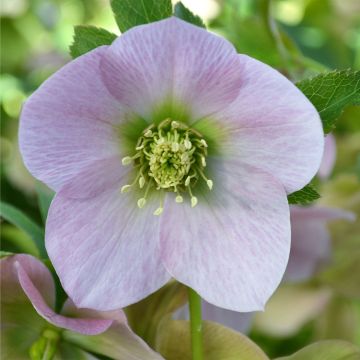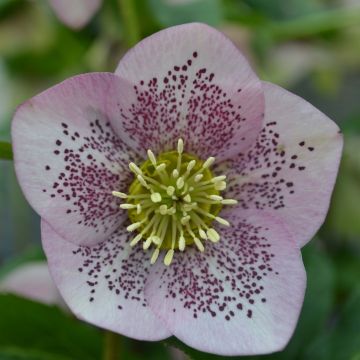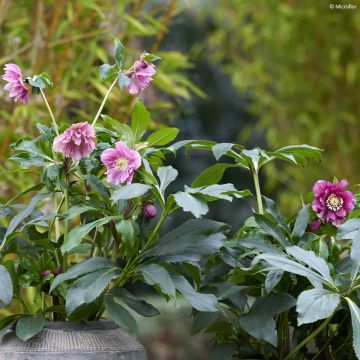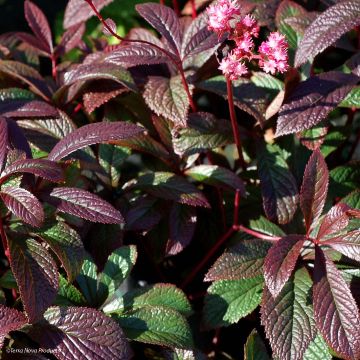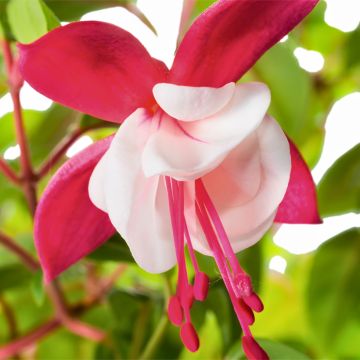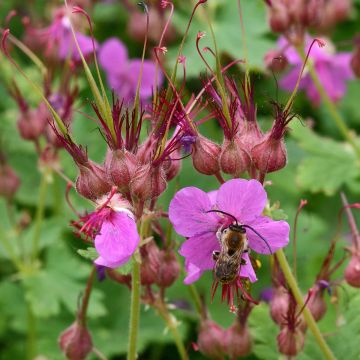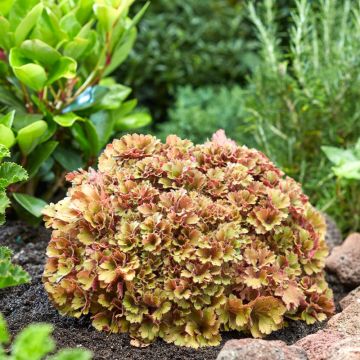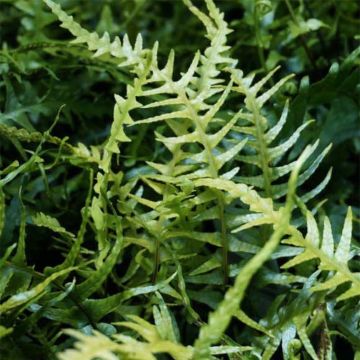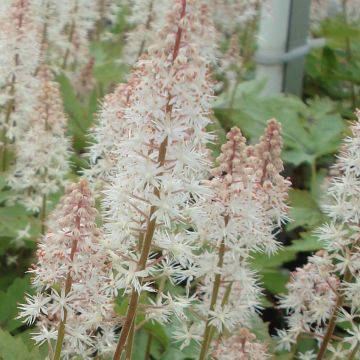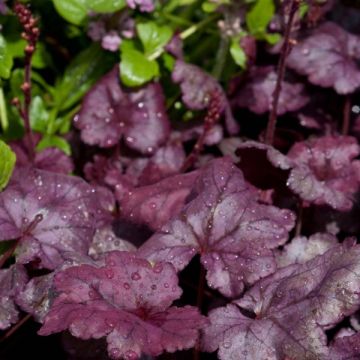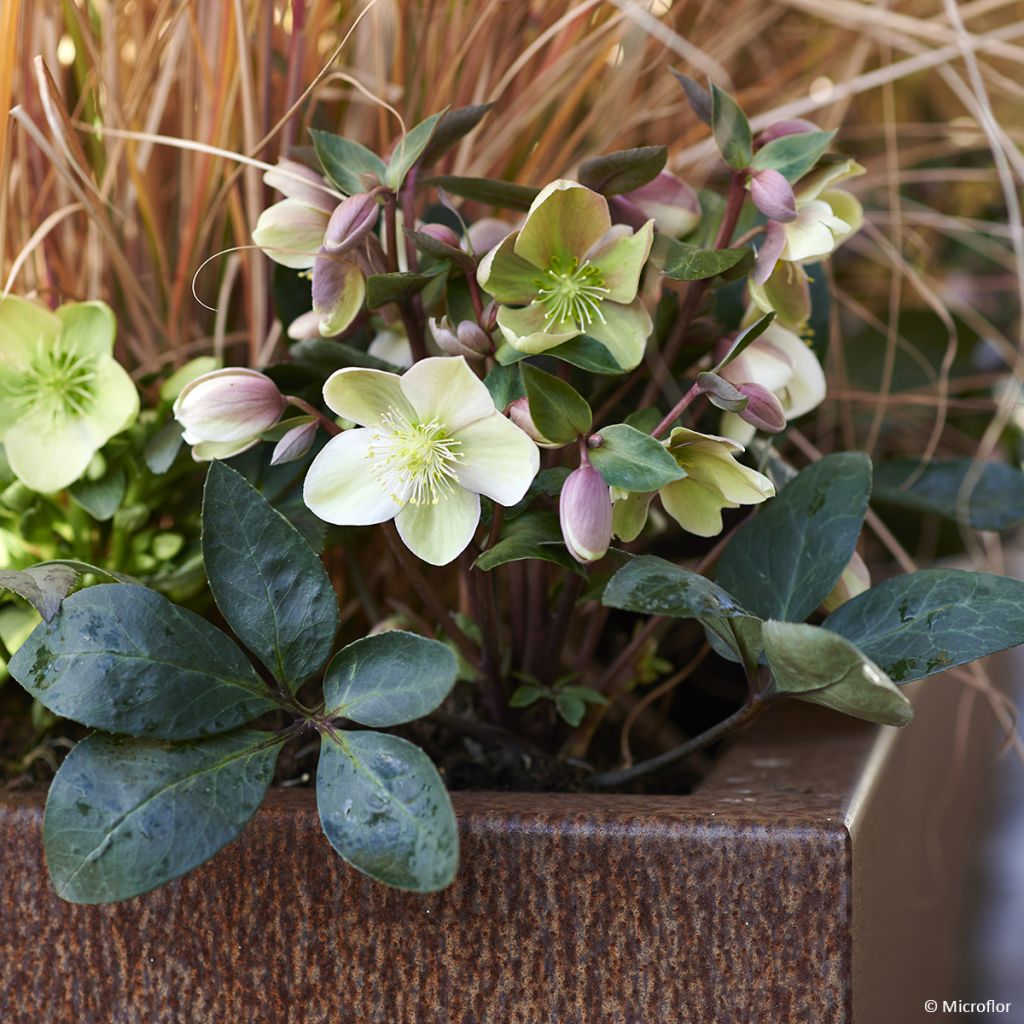

Helleborus hybridus (orientalis) ViV 'Valeria'
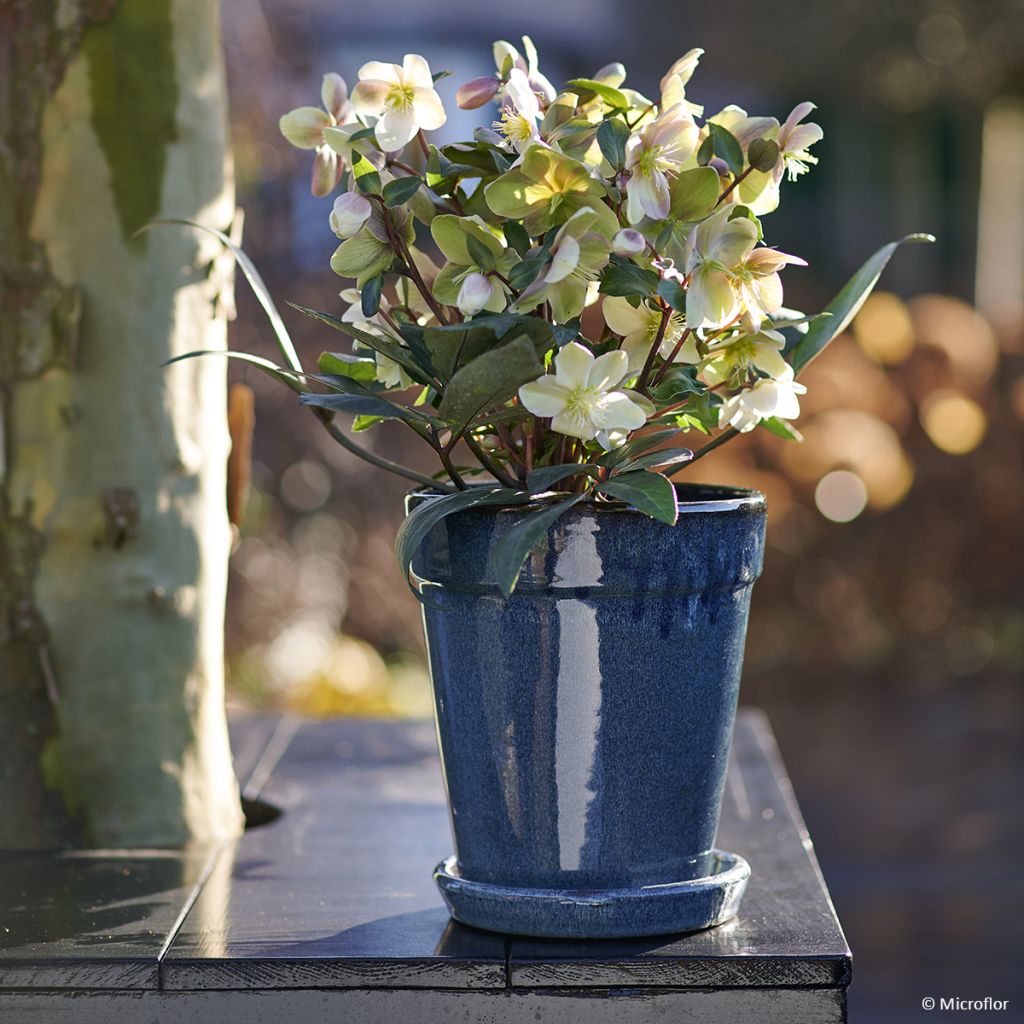

Helleborus hybridus (orientalis) ViV 'Valeria'
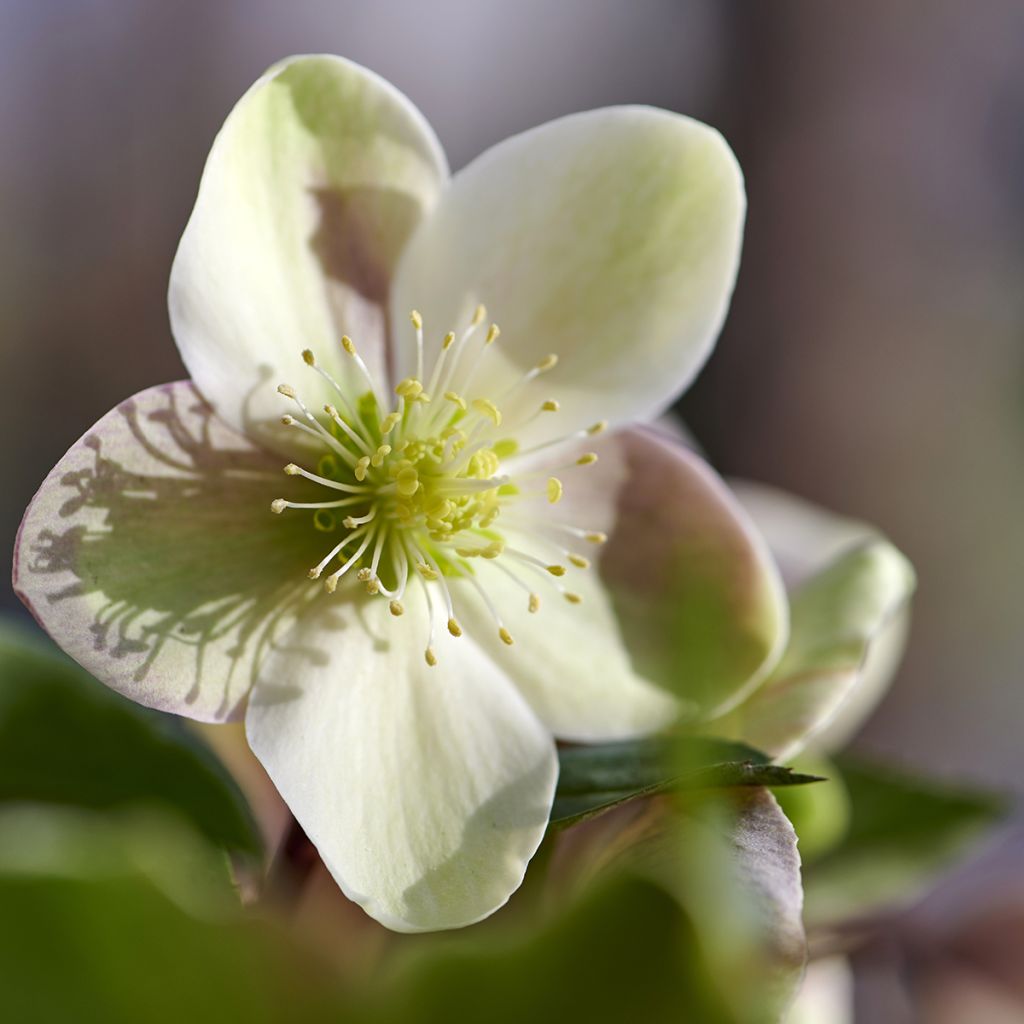

Helleborus hybridus (orientalis) ViV 'Valeria'
Helleborus hybridus (orientalis) ViV 'Valeria'
Helleborus x hybridus (orientalis) ViV® Valeria
Lenten Rose, Oriental Hellebore
This item cannot be shipped to the selected country
Delivery charge from €5.90
More information
Schedule delivery date,
and select date in basket
This plant carries a 12 months recovery warranty
More information
We guarantee the quality of our plants for a full growing cycle, and will replace at our expense any plant that fails to recover under normal climatic and planting conditions.
From €5.90 for pickup delivery and €6.90 for home delivery
Express home delivery from €8.90.
Does this plant fit my garden?
Set up your Plantfit profile →
Description
The Oriental Hellebore ViV 'Valeria' is a variety with single flowers, which possesses a romantic charm. This Lenten Rose blooms between October and February, producing simple flowers that open in creamy white tones and then evolve into a dark pink, almost red. It is a robust and hardy perennial that is easy to grow in all regions, even in slightly heavy soil, although it prefers humus-bearing soil. It will make beautiful borders in shaded areas, and its compact growth will also make it suitable for container cultivation. Plant it under the shade of deciduous trees, where it will flower in autumn and winter.
The Hellebore 'Valeria' is a member of the Ranunculaceae family, which includes about sixty genera and around 2500 species.
The cultivar ViV 'Valeria' is a Belgian hybrid derived from the cross-breeding of Helleborus x ericsmithii. The parents are Helleborus niger, the true Christmas Rose, which comes from the Alps, and Helleborus x sternii, itself a hybrid obtained by crossing H. argutifolius, native to Corsica and Sardinia, and H. lividus, from the Balearic Islands. 'Valeria' is a compact perennial, forming a clump 35 cm in height and width. Its foliage consists of basal, palmate, slightly dentate, leathery, shiny leaves of dark green colour. These are evergreen leaves in winter, which live for only eight months and are regularly replaced by new leaves.
'Valeria' blooms in autumn and winter, between October and February, brightening up borders under often dark skies at this time. The pink flower buds open into about 6 cm in diameter corollas, composed of five rounded petals in bright, creamy white. The centre is occupied by a bouquet of yellow stamens, which adds depth to the flower. Interestingly, as it ripens, the flower gradually turns to pastel shades, ending in dark pink, sometimes bordering on red. This metamorphosis further enhances the beauty of this perennial, as the flowers in different shades mix with the mass of green foliage. Hellebores do not like to be moved once established, as young shoots may take time to flower. Therefore, be careful to choose their location carefully when planting.
Hellebores are valuable perennial plants for brightening up dark autumn and winter days. Combine 'Valeria' with other perennials or shrubs with staggered flowering periods to enjoy year-round flowers. Plant a Daphne odora Aureomarginata in the background to enjoy the incredible fragrance emitted by its clusters of small pink flowers in February and March. The Brunneras, with their tiny blue or white flowers, are also very romantic and will be perfect in partial shade to accompany spring. To add height to your border, go for the Magnolia Fairy Blush, which produces pink flowers with a Lotus-like appearance and irresistible charm, accompanied by a pleasant fragrance.
Report an error about the product description
Helleborus hybridus (orientalis) ViV 'Valeria' in pictures


Flowering
Foliage
Plant habit
Safety measures
Botanical data
Helleborus
x hybridus (orientalis)
ViV® Valeria
Ranunculaceae
Lenten Rose, Oriental Hellebore
Cultivar or hybrid
ingestion
Cette plante est toxique si elle est ingérée volontairement ou involontairement.
Ne la plantez pas là où de jeunes enfants peuvent évoluer, et lavez-vous les mains après l'avoir manipulée.
Pensez à conserver l'étiquette de la plante, à la photographier ou à noter son nom, afin de faciliter le travail des professionnels de santé.
Davantage d'informations sur https://plantes-risque.info
Other Oriental Hellebore
Planting and care
The Oriental Hellebore 'Valeria' grows in any neutral to moderately chalky soil, or even slightly acidic, rich, light or clayey, in partial or light shade while sheltered from cold and dominant winds. South of the Loire, particular attention should be paid to avoiding direct sunlight during the hottest hours. This perennial can be planted from early autumn to spring. It thrives in deeply cultivated soil mixed with organic matter. To fertilise, use bone meal or another organic fertiliser. Water the plants well after planting, then add a layer of mulch 2 to 5 cm thick. Regularly remove faded leaves to improve flowering. Ensure a planting distance of 30 to 40 cm between each plant to promote their development. Hellebores do not tolerate stagnant water, as it can cause them to rot.
The roots should not completely dry out in summer. Hellebores can be affected by a fungal disease transmitted by aphids, known as black spot disease. Remove any stained leaves when the flower buds appear. Remove faded flowers after the seed falls. They can also suffer from grey rot or die from collar rot. This often occurs due to poor growing conditions and excessive wetness.
Plant this perennial on a balcony or terrace in a pot 4 to 5 times larger than its size, as it needs space to develop its root system. Very hardy, this Hellebore can withstand temperatures as low as -15°C or even lower, allowing it to adapt to almost all regions of France.
Planting period
Intended location
Care
This item has not been reviewed yet - be the first to leave a review about it.
Shade-loving perennials
Haven't found what you were looking for?
Hardiness is the lowest winter temperature a plant can endure without suffering serious damage or even dying. However, hardiness is affected by location (a sheltered area, such as a patio), protection (winter cover) and soil type (hardiness is improved by well-drained soil).

Photo Sharing Terms & Conditions
In order to encourage gardeners to interact and share their experiences, Promesse de fleurs offers various media enabling content to be uploaded onto its Site - in particular via the ‘Photo sharing’ module.
The User agrees to refrain from:
- Posting any content that is illegal, prejudicial, insulting, racist, inciteful to hatred, revisionist, contrary to public decency, that infringes on privacy or on the privacy rights of third parties, in particular the publicity rights of persons and goods, intellectual property rights, or the right to privacy.
- Submitting content on behalf of a third party;
- Impersonate the identity of a third party and/or publish any personal information about a third party;
In general, the User undertakes to refrain from any unethical behaviour.
All Content (in particular text, comments, files, images, photos, videos, creative works, etc.), which may be subject to property or intellectual property rights, image or other private rights, shall remain the property of the User, subject to the limited rights granted by the terms of the licence granted by Promesse de fleurs as stated below. Users are at liberty to publish or not to publish such Content on the Site, notably via the ‘Photo Sharing’ facility, and accept that this Content shall be made public and freely accessible, notably on the Internet.
Users further acknowledge, undertake to have ,and guarantee that they hold all necessary rights and permissions to publish such material on the Site, in particular with regard to the legislation in force pertaining to any privacy, property, intellectual property, image, or contractual rights, or rights of any other nature. By publishing such Content on the Site, Users acknowledge accepting full liability as publishers of the Content within the meaning of the law, and grant Promesse de fleurs, free of charge, an inclusive, worldwide licence for the said Content for the entire duration of its publication, including all reproduction, representation, up/downloading, displaying, performing, transmission, and storage rights.
Users also grant permission for their name to be linked to the Content and accept that this link may not always be made available.
By engaging in posting material, Users consent to their Content becoming automatically accessible on the Internet, in particular on other sites and/or blogs and/or web pages of the Promesse de fleurs site, including in particular social pages and the Promesse de fleurs catalogue.
Users may secure the removal of entrusted content free of charge by issuing a simple request via our contact form.
The flowering period indicated on our website applies to countries and regions located in USDA zone 8 (France, the United Kingdom, Ireland, the Netherlands, etc.)
It will vary according to where you live:
- In zones 9 to 10 (Italy, Spain, Greece, etc.), flowering will occur about 2 to 4 weeks earlier.
- In zones 6 to 7 (Germany, Poland, Slovenia, and lower mountainous regions), flowering will be delayed by 2 to 3 weeks.
- In zone 5 (Central Europe, Scandinavia), blooming will be delayed by 3 to 5 weeks.
In temperate climates, pruning of spring-flowering shrubs (forsythia, spireas, etc.) should be done just after flowering.
Pruning of summer-flowering shrubs (Indian Lilac, Perovskia, etc.) can be done in winter or spring.
In cold regions as well as with frost-sensitive plants, avoid pruning too early when severe frosts may still occur.
The planting period indicated on our website applies to countries and regions located in USDA zone 8 (France, United Kingdom, Ireland, Netherlands).
It will vary according to where you live:
- In Mediterranean zones (Marseille, Madrid, Milan, etc.), autumn and winter are the best planting periods.
- In continental zones (Strasbourg, Munich, Vienna, etc.), delay planting by 2 to 3 weeks in spring and bring it forward by 2 to 4 weeks in autumn.
- In mountainous regions (the Alps, Pyrenees, Carpathians, etc.), it is best to plant in late spring (May-June) or late summer (August-September).
The harvesting period indicated on our website applies to countries and regions in USDA zone 8 (France, England, Ireland, the Netherlands).
In colder areas (Scandinavia, Poland, Austria...) fruit and vegetable harvests are likely to be delayed by 3-4 weeks.
In warmer areas (Italy, Spain, Greece, etc.), harvesting will probably take place earlier, depending on weather conditions.
The sowing periods indicated on our website apply to countries and regions within USDA Zone 8 (France, UK, Ireland, Netherlands).
In colder areas (Scandinavia, Poland, Austria...), delay any outdoor sowing by 3-4 weeks, or sow under glass.
In warmer climes (Italy, Spain, Greece, etc.), bring outdoor sowing forward by a few weeks.

































